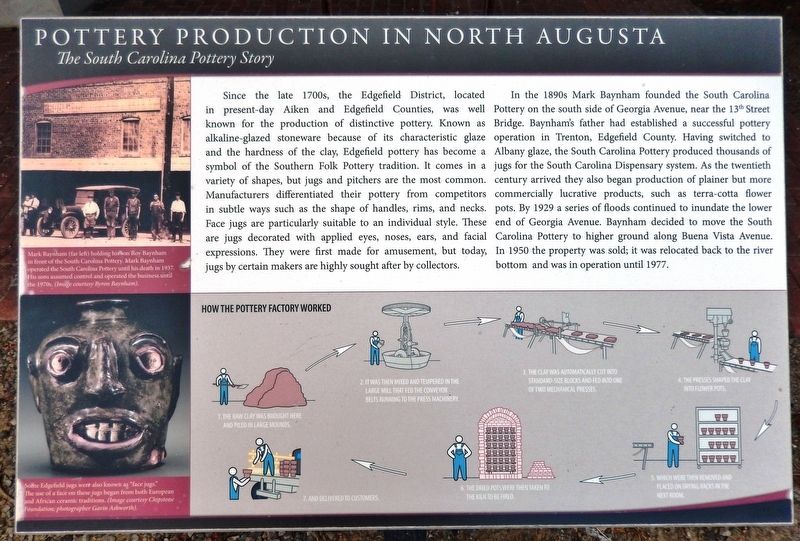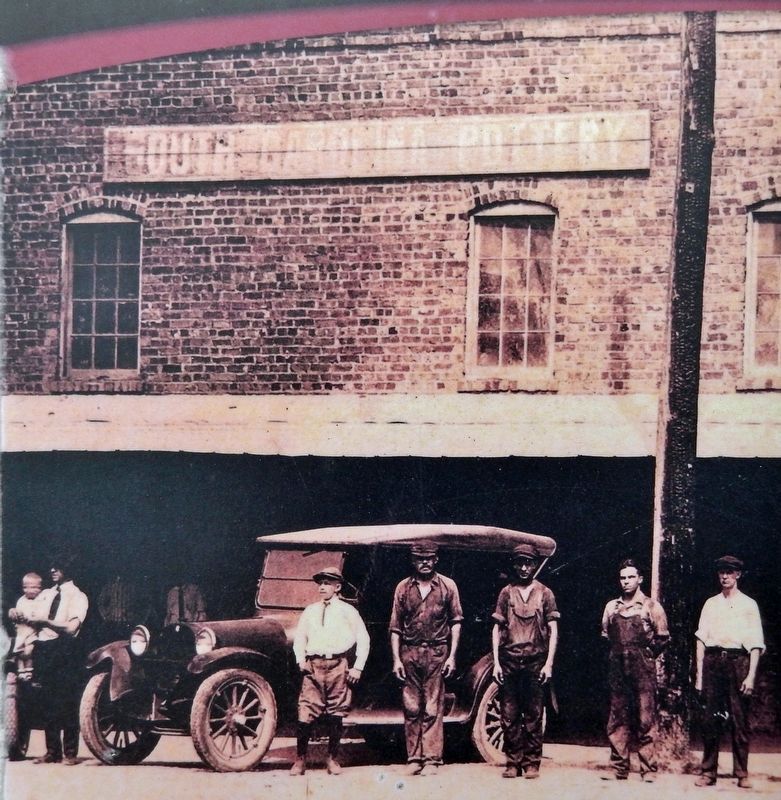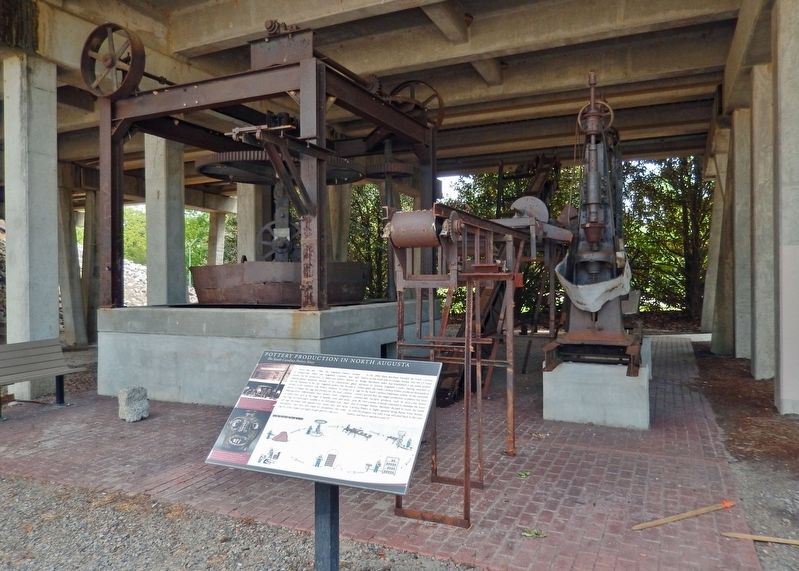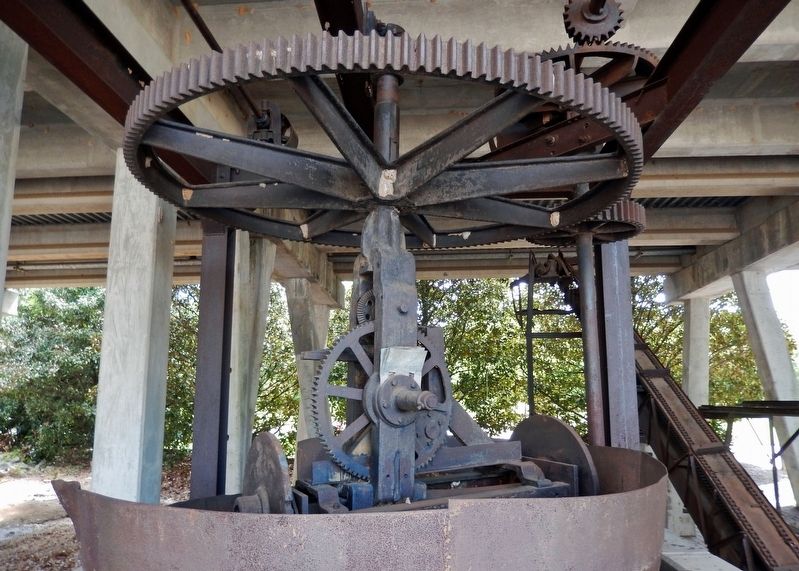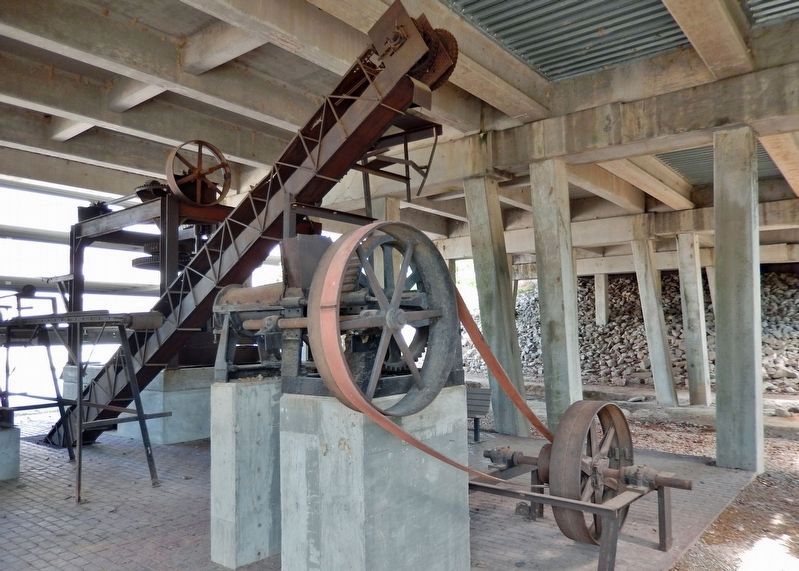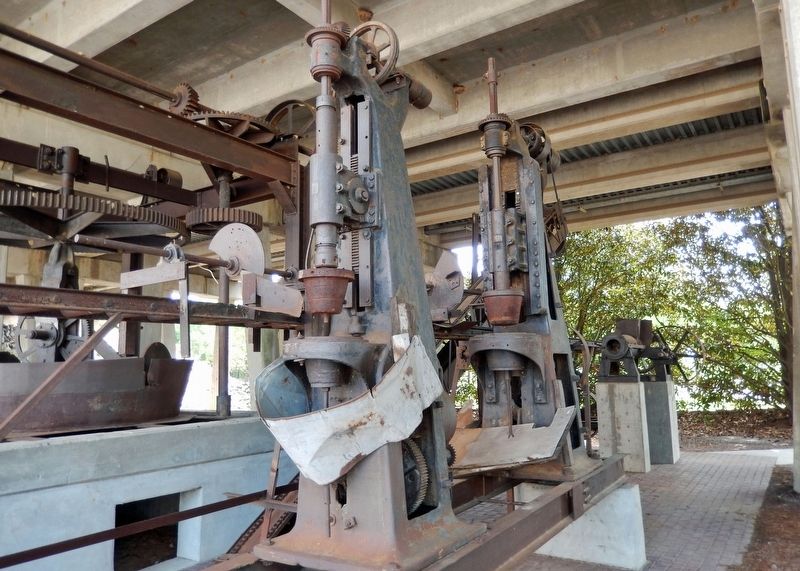North Augusta in Aiken County, South Carolina — The American South (South Atlantic)
Pottery Production in North Augusta
The South Carolina Pottery Story
Since the late 1700s, the Edgefield District, located in present-day Aiken and Edgefield Counties, was well known for the production of distinctive pottery. Known as alkaline-glazed stoneware because of its characteristic glaze and the hardness of the clay, Edgefield pottery has become a symbol of the Southern Folk Pottery tradition. It comes in a variety of shapes, but jugs and pitchers are the most common. Manufacturers differentiated their pottery from competitors in subtle ways such as the shape of handles, rims, and necks. Face jugs are particularly suitable to an individual style. These are jugs decorated with applied eyes, noses, ears, and facial expressions. They were first made for amusement, but today, jugs by certain makers are highly sought after by collectors.
In the 1890s Mark Baynham founded the South Carolina Pottery on the south side of Georgia Avenue, near the 13th Street Bridge. Baynham's father had established a successful pottery operation in Trenton, Edgefield County. Having switched to Albany glaze, the South Carolina Pottery produced thousands of jugs for the South Carolina Dispensary system. As the twentieth century arrived they also began production of plainer but more commercially lucrative products, such as terra-cotta flower pots. By 1929 a series of floods continued to inundate the lower end of Georgia Avenue. Baynham decided to move the South Carolina Pottery to higher ground along Buena Vista Avenue. In 1950 the property was sold; it was relocated back to the river bottom and was in operation until 1977.
Topics. This historical marker is listed in this topic list: Industry & Commerce.
Location. 33° 29.1′ N, 81° 58.362′ W. Marker is in North Augusta, South Carolina, in Aiken County. Marker can be reached from Railroad Avenue just west of Riverside Boulevard (North Augusta Greenway), on the right when traveling west. The marker is located near the southeast corner of Brick Bond Park, underneath the James U. Jackson Memorial Bridge. Touch for map. Marker is at or near this postal address: 88 Georgia Avenue, North Augusta SC 29841, United States of America. Touch for directions.
Other nearby markers. At least 8 other markers are within walking distance of this marker. North Augusta's Historic Industrial Area (here, next to this marker); James U. Jackson Memorial Bridge / James U. Jackson (1856-1925) (within shouting distance of this marker); Sharon Lafaye Jones (approx. 0.2 miles away); Springfield Baptist Church Birthplace of Morehouse College (approx. 0.4 miles away in Georgia); Revolutionary War (approx. 0.4 miles away); War of 1812 Tribute (approx. 0.4 miles away); Mexican War Tribute
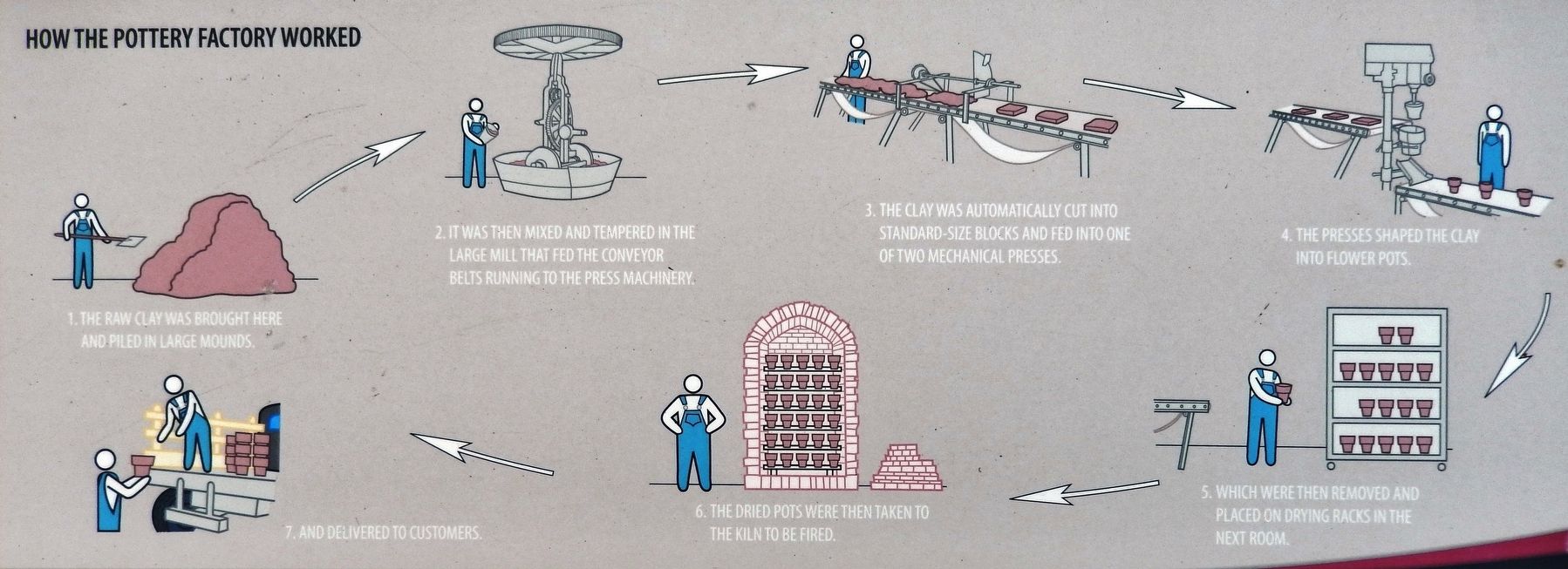
2022
2. Marker detail: How the Pottery Factory Worked
1. The raw clay was brought here and piled in large mounds.
2. It was then mixed and tempered in the large mill that fed the conveyor belts running to the press machinery.
3. The clay was automatically cut into standard-size blocks and fed into one of two mechanical presses.
4. The presses shaped the clay into flower pots.
5. Which were then removed and placed on drying racks in the next room.
6. The dried pots were then taken to the kiln to be fired.
7. And delivered to customers.
2. It was then mixed and tempered in the large mill that fed the conveyor belts running to the press machinery.
3. The clay was automatically cut into standard-size blocks and fed into one of two mechanical presses.
4. The presses shaped the clay into flower pots.
5. Which were then removed and placed on drying racks in the next room.
6. The dried pots were then taken to the kiln to be fired.
7. And delivered to customers.
Also see . . .
1. Edgefield District Pottery: Origins of Southern Stoneware. Excerpt:
For more than 200 years, the Edgefield area of South Carolina has been known for its production of a specific type of pottery called "stoneware." Strong and non-porous, stoneware is usually glazed and fired in a kiln at very high temperatures. The resulting product can be very large – up to 40 gallons! – and has the potential to last for centuries.(Submitted on January 4, 2024, by Cosmos Mariner of Cape Canaveral, Florida.)
2. Edgefield pottery (South Carolina Encyclopedia). Excerpt:
The term “Edgefield pottery” is used to identify alkaline-glazed stoneware first produced in Edgefield District in the 1810s. Edgefield pottery blends the cultural traditions of England, Europe, Asia, and Africa. Many of the potters came from English, Irish, and German backgrounds and contributed their forms and techniques, while African American slaves performed the majority of the labor-intensive tasks. The distinctive glaze (made of wood ash, feldspar, clay, and water) and use of the groundhog kiln were typical of pottery techniques used in the Far East.(Submitted on January 4, 2024, by Cosmos Mariner of Cape Canaveral, Florida.)
Credits. This page was last revised on January 4, 2024. It was originally submitted on January 4, 2024, by Cosmos Mariner of Cape Canaveral, Florida. This page has been viewed 101 times since then. Photos: 1, 2, 3, 4, 5, 6, 7, 8. submitted on January 4, 2024, by Cosmos Mariner of Cape Canaveral, Florida.
